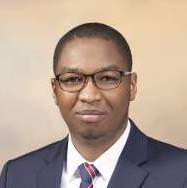MSU researcher developing mobile app to create feed optimal feed rations for livestock
Daniel Uyeh, assistant professor in BAE, is part of a project in partnership with UC Davis to research and develop a mobile app to be used by farmers for their livestock

The global population surpassed 8 billion in November 2022, according to the United Nations. Low and middle-income countries will continue to see populations increase while developed countries are slowing reproductive rates. One of the major challenges of a growing population is feeding all the people. Animal-based foods are important food products needed for food security in low and middle-income countries. Growing more food has historically led to an increase in greenhouse gas emissions. The challenge facing scientists is how food production can increase while not contributing to greenhouse gas emissions. Methane gas is a known greenhouse gas contributor from animal production.
Michigan State University (MSU), as part of a larger project led by UC Davis, received over 700 thousand dollars of the total nine million towards this project. Daniel Uyeh, Ph.D., assistant professor in MSU’s Department of Biosystems and Agricultural Engineering, is leading MSU’s efforts on this project. The final goal of the project is to develop a mobile app that can be easily used by farmers to create feed rations for increased livestock growth without wasting feed or increasing cost too much. This helps producers meet the increasing need of more food to feed the population.
“This project will enable the team to collect multiple datasets internationally, enhancing our understanding and

contribution to global methane reduction in the livestock sector.” Said Uyeh “It will also facilitate the development of a global feed database and an inclusive machine learning-based system for feed characterization and formulation.”
This project has multiple phases and is focusing on select countries in both Asia and Africa. These two regions represent over 300 million dairy cattle and buffaloes. MSU experts will collaborate with an international team to provide technical support and protocols for multi-spectral imaging at harvest, post-drying, and post-grinding. The team will collect RGB images, which are visible to the human eye and work best with physical analysis. RGB analysis is a lower-cost method compared to chemical analysis. After the data is collected, it will be compiled and used to develop a system for feed characterization. Uyeh and his team will also provide technical expertise with diet formulation.
“Upon completion, a grower can easily use a smartphone to take photos of feed materials, characterize them for important components in feed formulation, and store this information for future reference.” Said Uyeh.
Uyeh’s team will help develop prediction models for methane emissions based on the data gathered in the earlier phases. The resulting app will provide producers with all the information necssary to formulate livestock feed rations, optimizing production based on local breeds, conditions, and feeds. It will also help balance cost, production, and methane emissions.



 Print
Print Email
Email



